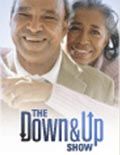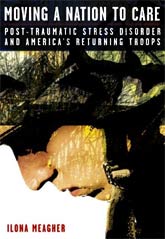LinkBlog
Generalized Anxiety Disorder - Patient treatment manual (pdf)
Understanding post-traumatic stress disorder
Most People are Optimists - Except for Lawyers
'Broken Heart Syndrome'

In the largest review of "broken heart syndrome" patients ever conducted, Mayo Clinic researchers studied 100 patients and found symptoms recurred in 1 out of 10 patients over a four-year period, and that patients experiencing physical stress had a worse survival rate than those under emotional stress. The information may help physicians manage their heart patients more effectively by providing new details about a recently recognized condition that mimics heart attack symptoms of shortness of breath and chest pain. Because one trigger of the syndrome is severe emotional stress, such as loss of a loved one, the condition several years ago was nicknamed "broken heart syndrome." It is known medically as apical ballooning syndrome (ABS).
In a second Mayo study on the syndrome, the Mayo Clinic researchers found one possible cause of the disorder. By analyzing ABS patients' heart flow, they found that two-thirds of patients with broken heart syndrome had abnormal heart-blood flow that may be due to dysfunctional small blood vessels. Both studies were presented today at the annual meeting of the American Heart Association in Chicago, Ill.
Significance of the Mayo Research Combined, these study results may improve diagnosis and management of ABS patients. "Apical ballooning syndrome is an important acute cardiac syndrome that we have begun to recognize recently. These data add important long-term perspective of the prognosis of patients who have ABS. The main finding is that recurrence is possible and happens in about 10% of patients and that physical stressors may affect survival more than emotional stressors. We don't yet know how to prevent it, or the precise cause of ABS, but our data point to abnormalities of the microscopic blood vessels in about two thirds of patients. Further clinical and basic research is underway," says Charanjit Rihal, M.D., Mayo Clinic cardiologist and director of the Cardiac Catheterization Laboratory.
ABS syndrome is a recently recognized disorder in the United States. It was described in Japan about 15 years ago. In ABS, when patients' hearts respond to stress, the tip of the heart's main pumping chamber stretches, balloons out and weakens. The syndrome has been diagnosed mainly in postmenopausal women, though the reason for this gender skew is not yet known.
About the Two Mayo Studies In the Mayo heart-blood flow study, 51 female ABS patients and 14 non-ABS patients were matched for sex, age and heart pumping ability. None of the study participants had blocked blood vessels or other evidence of heart problems. Their hearts were imaged by coronary angiogram within 24 hours of the ABS symptoms to determine how well the heart muscle was nourished by blood flow. Results showed:
- 69 percent had abnormal blood flow patterns in their hearts
- dysfunction in the small blood vessels appears to contribute to the flow abnormality
- those with the greatest abnormalities were at the greatest risk of injury to the heart muscle
In the largest study of ABS patients ever undertaken, Mayo researchers investigated recurrence and survival rates in 100 ABS patients seen at Mayo Clinic from January 1988 to November 2005. The patients were sorted into these three groups, intended to characterize events that triggered ABS symptoms: 1) Acute emotional stressors 2) Acute physical stressors 3) No identifiable precipitating event. Results showed:
- 11 percent of patients — approximately 1 in 10 — experienced recurrence over a four-year period
- chest pain is common during the event, as well as in the follow-up events
- approximately 3.6 percent of cases were fatal
- fatalities were largely determined by the overall health of the patient
ABS patients who experienced a physical stressor had a significantly worse survival rate than those experiencing an emotional stressor or no stress
















